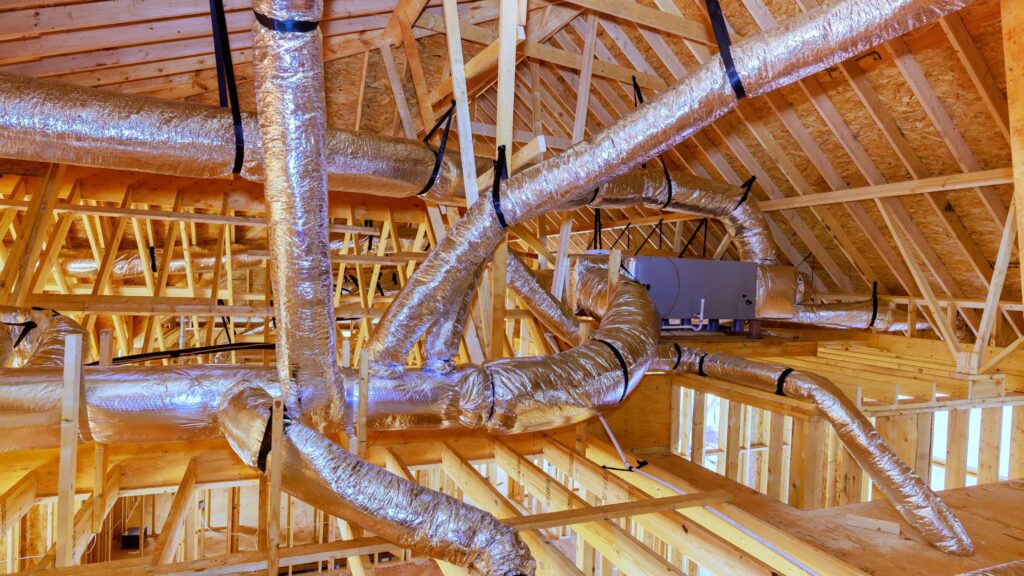Radon is a radioactive gas that quietly seeps into homes, posing a serious health risk without any visible warning. Fortunately, installing a proper radon mitigation system can drastically reduce those risks. At the center of that system lies the most important component—the radon fan.
Whether you’re building a new home or improving an existing one, understanding how a radon fan works, and why it’s necessary, can help you make informed choices for your family’s safety.
What Is a Radon Fan?
A radon fan is the core device that pulls radon gas from beneath your home and directs it outside, away from the living space. It operates as part of an active soil depressurization (ASD) system and creates a constant suction force. This suction prevents radon gas from entering through the foundation, cracks, or drain systems.
Once the fan collects the radon from beneath the slab or crawl space, it pushes the gas upward through a sealed vent pipe, ultimately releasing it above the roofline. This method ensures radon dissipates safely into the atmosphere, where it can no longer harm the home’s occupants.

Why You Need a Quality Radon Fan
Not all radon mitigation systems are created equal. The fan you choose directly impacts system efficiency and durability. A high-quality radon fan not only moves air efficiently but also operates quietly and withstands outdoor elements.
Here’s why investing in the right radon fan matters:
- Continuous Operation:
Radon fans run 24/7, so energy efficiency and noise levels are key.
- Durability:
Outdoor installation demands weather-resistant housing and reliable components.
- Proper Airflow:
Depending on your home’s soil type and foundation, the fan must handle the correct airflow volume.
Some fans are specifically engineered to perform better in certain climates or under specific soil conditions. That’s why professional guidance is essential when selecting a radon fan for your home.
How to Know If Your Radon Fan Is Working
A properly installed radon fan should run constantly and quietly. However, it’s possible for fans to fail silently, putting your home at risk without immediate signs. Here are a few tips to ensure your system is functioning:
- Check the Manometer:
This U-shaped tube typically mounted on the vent pipe should show an uneven reading. If both sides are equal, the fan may not be running.
- Listen for Sound:
Although fans are quiet, you should hear a faint hum or feel vibration when the system operates correctly.
- Use a System Alarm:
Some radon systems come with pressure alarms that alert you if the airflow drops unexpectedly.
If your home has high radon levels and your fan isn’t working, you should act quickly. A test for radon can confirm if exposure is increasing.
How Long Does a Radon Fan Last?
On average, a radon fan lasts between 5 to 10 years. Its lifespan depends on several factors such as climate, installation quality, and usage. Over time, fans may become louder or less efficient, which indicates it may be time for a replacement.
You should schedule annual inspections to catch early signs of wear. Replacing the fan before it fails can ensure uninterrupted protection from indoor radon levels.

Tips for Choosing the Right Radon Fan
Choosing the right fan is just as important as installing one. Here’s what to look for:
- CFM Rating:
Cubic feet per minute (CFM) measures airflow capacity. Your fan must match your home’s ventilation needs.
- Noise Level:
Look for fans with quiet motor designs, especially if they’re mounted near living areas.
- Energy Efficiency:
A high-efficiency radon fan can reduce power bills without sacrificing performance.
- Warranty & Build Quality:
Select fans that offer solid warranties and are made from weatherproof materials.
Also, consider using certified brands that specialize in radon mitigation system components. This ensures compatibility and performance you can trust.
Conclusion
If you want to protect your home from harmful radon gas, installing a quality radon fan is non-negotiable. It’s the driving force behind your mitigation system and the reason radon doesn’t stay trapped inside your home. While the system may seem simple, proper fan selection, installation, and maintenance are critical for long-term effectiveness.
To learn more or to schedule a radon system consultation, visit DSM Radon.

Frequently Asked Questions
1. What does a radon fan do?
A radon fan pulls radon gas from beneath your home and vents it safely outside, reducing indoor radon levels and preventing health risks.
2. How do I know if my radon fan is working?
Check the pressure gauge or manometer attached to your system. An uneven reading usually means the fan is running. If in doubt, listen for sound or feel vibration near the fan housing.
3. Can I install a radon fan myself?
While DIY kits exist, professional installation ensures correct sizing, venting, and code compliance—especially for homes with unique layouts or soil conditions.
4. What happens if my radon fan stops working?
Radon levels can rise quickly if the fan fails. You should test for radon periodically and replace the fan every 5–10 years or as recommended by the manufacturer.





